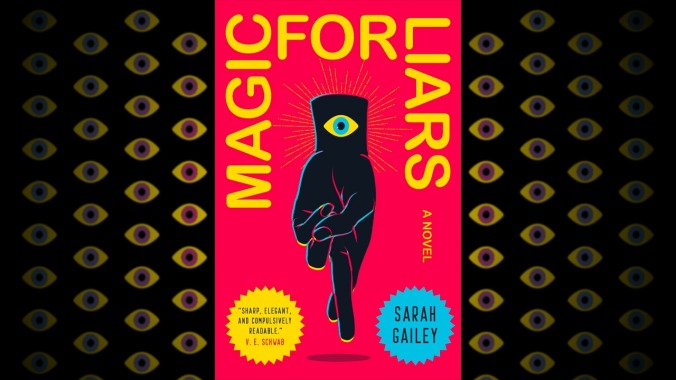It’s Harry Potter meets Megan Abbott in fantasy noir Magic For Liars

In Sarah Gailey’s debut novel, Magic For Liars, twin sisters Ivy and Tabitha Gamble grow apart after Tabitha is admitted to an elite boarding school and returns a very different person. As Ivy narrates, “Her long hair—used to be plain old ‘dark brown,’ but after she came back from school it was something else, something richer like chestnut or umber or ocher—hung in soft waves, and her large brown eyes were the same as mine but more somehow, more sparkling, more alive. Better.” The problem was that Tabitha hadn’t just changed schools; she’d changed genres.
Tabitha manifested magical powers as a child and was swept into a secret world of mages (they don’t like to be called witches or wizards). Ivy feels abandoned as she copes with the decidedly mundane problems of getting through high school and watching their mother die of cancer. Magic For Liars is set years after Ivy barely graduated and started working as a private investigator, having failed to achieve her dream of joining the FBI. Fully estranged from Tabitha, Ivy is pulled back into her world by the headmaster of Osthorne Academy after a teacher is found dead in the restricted theoretical magic section of the school’s library. The official investigation found that she died in a personal experiment gone wrong, but the headmaster wants a second opinion. Positing that Ivy’s unique position as a detective who knows about the magical world but isn’t part of it gives her a fresh perspective, the headmaster asks her to search the school for the murderer.
Imagining a Harry Potter novel written by Megan Abbott is a phenomenal setup for a book, and Gailey provides a decidedly more grounded version of the magic school experience. Located in Northern California, Osthorne more closely resembles a fancy American prep school than Hogwarts. The most magical thing about it might be its seemingly earthquake-proof brick. Inside its walls, Ivy must reconnect with her sister, who is a theoretical magic teacher, and confront the better life she might have had if she’d also been capable of magic. She resents the students who she feels have been given an impossible gift but use it for decidedly juvenile and petty purposes like putting up graffiti that can’t be removed and conjuring penis-shaped clouds to sail through the hallways.
Ivy’s chief suspects become Dylan DeCambray, a troubled senior obsessed with the idea that he’s a prophesied chosen one, and his half-sister, Alexandria, the ruthless and powerful head of a carefully cultivated clique of girls who can intimidate even the faculty. Unfortunately, they never get the development needed to make them feel like anything more than moving pieces of the plot. While the story itself follows the beats of a noir perfectly, down to an ending that delivers only pain for everyone involved, it’s not quite twisty enough. I had the answer to the mystery figured out a full hundred pages before it was taking Ivy by surprise.
